I met Anca Rujoiu in London in 2012, when she was co-directing curatorial collective FormContent, and I became a huge fan of their work. We met again over the years, either in London or in Bucharest – after she had moved to Singapore to become the curator of a newly founded art institution led by Ute Meta Bauer, NTU Centre for Contemporary Art Singapore (NTU CCA Singapore).
The following dialogue took place in one of the 365 days of perfect sun in Singapore, on a terrace with the fan on and where birds constantly covered our voices with songs.
I would like to talk about the context you activate in.
I came to Singapore as curator of a newly established centre for contemporary art – NTU Centre for Contemporary Art Singapore / NTU CCA Singapore – inaugurated in October 2013. The centre opened just one week after I landed. My role was defined as exhibitions curator, but since this was a recently opened institution and its structure was still in formation, during the first year my responsibilities grew. Alongside the exhibition program, I conceptualized and organized the public programme together with Ute Meta Bauer, the founding director of the centre, I contributed to bringing the institution’s identity to life. This holistic approach suited me because, having worked only with small structures in the past, I welcomed the flexibility and I could juggle various roles. At FormContent, I always worked in a very holistic manner, I was involved in all the aspects of the curatorial process —from dialogue and collaborating with artists, conceptualizing a project, installing the exhibition, writing and editing texts, to applications for funding, etc. This way of working is very important for me, no cultural project can develop in isolation and it involves numerous factors, many contingencies s and circumstances that have an impact on the final result.
What is your institution’s role, its function? How does it see itself, why did it came to be? Why was Ute invited to be curator/director?
I think it is a huge opportunity to be in Singapore — and in Asia in general — during a time when a lot of institutions are being built and art histories are written and rewritten through exhibitions and curatorial programmes. Starting with 2000, Singapore has introduced a master plan for development of arts and culture and for facilitating the transition to “knowledge” economy. It is called the Renaissance City Plan and it included various steps, one of them being the development of art clusters. Gillman Barracks, where NTU CCA Singapore is situated, is a former military centre build by the British during the colonial period and now, after many transitions, it was transformed into an art cluster that hosts galleries, a research centre, and other artistic organizations. The Renaissance City Plan and a predeceasing report from 1989 were the foundation for building numerous Singapore institutions, all relatively new: Singapore Art Museum / SAM was created in 1996 and the National Gallery in 2015. What is interesting is that the Government’s vision has been very precise regarding the role that each institution must play. The National Gallery was build for collecting and presenting Southeast Asian modern art, SAM focuses on contemporary art from Southeast Asia.
NTU CCA Singapore was formed as a hybrid institution that combines art presentations (exhibitions) with residencies, research and academic education. It is part of one the main universities here, Nanyang Technological University. Singapore then, did not have a large and contiguous exhibition space for contemporary art that operated along the lines of a kunsthalle to push curatorial experiments to the fore. Neither was there a sizeable international residency programme at that time. Bringing together these two “new” components and pairing them with research and education initiatives in an academic environment was key to plugging what was conceived as gaps in the Singapore art ecology. The centre is meant to create connections between the local, regional and “international” scenes, the later being a problematic term still because it is limited to the western sphere.
Ute’s choice as a founding director is motivated by her curatorial profile: she was already active in Asia and was familiar with the region; she has worked in the academic environment, at MIT and the Royal College or Art in London; she has contributed to the founding of new institutions, such as The Office for Contemporary Art in Norway.
What is your work relationship with Ute at CCA?
It was a very tight collaboration because, when I arrived, we were just three people. I learned a great deal, I myself was transitioning from a project space like FormContent, where the public was mostly formed by artists and curators, to working in an institution that has to deal with various types of audiences and various expectations. Ute has worked for many types of institutions, including Documenta, and takes a lot of details into account when preparing any project, like small, practical things (for instance proper signgage) that might elude you, but important nonetheless as they are part of the overall art-viewing experience.
An essential thing I’ve learned from Ute was the role of the spatial process when approaching an exhibition: since she is a curator with a background in stage design, she has an extraordinary sense of objects and body movement in a fixed space. What I think is very special with each NTU CCA Singapore’s exhibition is the radical transformation of the space.
What is NTU CCA Singapore’s local reach?
One of the difficulties I encountered at first was the fact that I was not familiar with Southeast Asia. The exhibition programme was meant to be international, and for me it became very important to reach out to the public here: make the exhibitions relevant for the local public and facilitate its involvement in our programme. In this sense, we created within our public programme the series Exhibition (de)tours in which, instead of inviting the curator to organize a conventional exhibition tour, we invited various speakers, some of whom were not even part of the art world, to present the exhibition from their own perspective sometimes outside the exhibition space. We wanted to connect the exhibition themes with wider topics so we included economists, geographers, scientists and musicians in our programme. Each exhibition detour would produce a new perspective, thus extending the exhibition in the wider realm of knowledge. For me it was very important that the exhibition does not reach a dead end and continues through various means; the public programme or publications can extend the life of an exhibition. The exhibition is a raw material that you can manipulate and change in order to view it from new perspectives or contradictory points. I only had, at that point, the intuitive capacity to make these connections to what is immediately important to the local context. Many of those we invited were prepared to look at the exhibition and draw attention to relevant aspects for the local context and region. I did not want CCA to become an import product. A few of the exhibitions were dedicated to artists from the region, like Malaysian artist Simryn Gill’s first Southeast Asia solo show. We continued working with Simryn after the exhibition, together we produced a book that was recently launched, Becoming Palm, a conversion between herself and anthropologist Michael Taussig about the oil palm cultures, a relevant and sensitive subject in the region yet not treated dogmatically by the authors.
By creating these exhibitions, you also formed the public. Was there a contemporary art scene in Singapore before the NTU CCA Singapore?
Since this was a new institution, we’ve made efforts in bringing the existing public closer and earning their trust; the process continues. For me, coming from FormContent, it was important to develop moments, projects which I call, quoting British curator Alex Farquharson, small pockets, projects addressing a small but important audience: this public is the community that motivates, supports you and brings critical contributions. It is made of artists, local critics and more, in fact I was pleased to find a a very diverse community in Singapore. For example, one of these projects was a collaboration with Post-Museum that I initiated together with my ex-colleague, former curator for residencies, Vera Mey. Founded by Jennifer Teo and Woon Tien Wei, Post-Museum is an independent and nomadic artistic platform. Between 2005-2007, Post-Museum had a space in Little India in Singapore, where they organized various activities, including running a restaurant. I had a talk with them just when we were starting out, and they asked why artists were not invited to take over empty spaces at Gillman Barracks (where CCA is hosted). When given the chance to work on a project with local artists, Vera and I thought about bringing Post-Museum to Gillman Barracks and have them create an institution within an institution. I thought it was important to test this relationship and learn from an artistic institution. It was a valuable experience for me. For six months, Post-Museum ran its own program, a pop-up in one of the residency spaces. The programme was built on the idea of an open space: whoever had a proposal for their space could put it into practice. Being used to making curatorial selections, I wanted to go over these proposals and select them, but they stopped me, they said that the idea is to not make any selections, to test the limits of an open space. One of the problems with curating is the fact that selection also involves exclusion, whereas they adopted an all-the-way inclusive attitude which I understood. This openness gathered people who would perhaps have never visited NTU CCA Singapore otherwise: activists, grassroots movement members engaged with ecology matters, minority rights, etc.
Wasn’t it complicated to organize such events at an institutional level?
I had a lot of autonomy during this collaboration, and Post-Museum worked independently. For me, this type of program and collaboration is very important because it pushes a curator and an institution to rethink their way of working and learn from the artists.
Were you able to work on personal projects since you got here?
For the first two years it was impossible. I took part in several public programmes, but I haven’t managed to put together an independent project until recently. It also takes time for conversations to take shape, I didn’t want to rush, but rather allow time for ideas and collaborations to grow and take a solid form. Together with FormContent we had an exhibition generously hosted by ICA Singapore, and last year I collaborated with Stephanie Jane Burt, an artist from Singapore, for an exhibition at the Yeo Workshop, it was a very close collaboration and the very result of many conversations I had with Stephanie since I moved here. This closeness could have not been achieved otherwise.
Did you explore the Southeast Asian scene? Actually, please explain this concept…
Ever since I got here I was directly confronted with this concept. Though it does not reflect the heterogeneity of the region, it offers a broader vision than the perspective of a nation-state and has created visibility conditions for this part of the world. It reflects also the cultural interconnections that account for centuries, labour migrations and the continuous trade exchanges.
What is Singapore’s role in the region, how is it seen?
Singapore is trying to be a connector for the region, a meeting place for the area’s artists and curators. It undoubtedly has financial strength and the government’s willingness to create these infrastructural platforms that have no chance of being build in many of the regional states because most lack cultural public support. Singapore Art Museum played an important role in purchasing regional contemporary artworks. It is important that art makes it to public institutions and becomes accessible.
Southeast Asia is now faced with defining its position in the world. What has the local discourse been able to provide? You’ve told me before about the various aspects of this city: social control, economical strength, cases of censorship, openness towards the region, many things that someone like me could not intuitively merge.
For me, it was truly interesting to see how the local artists rewrite history, how they attempt to create alternative or historically opposing narratives. For instance, artists from here – Ho Tzu Nyen, who questions the founding myths of this state-city; Shubigi Rao whose eclectic and excessive collection of notebooks, drawings, ephemera confronts you with the impossibility of knowlege; Koh Nguang How, who also took part in a CCA residency, has been documenting and collecting material on the Singapore art scene for several decades. Artists have played an important part in the region and have created knowledge platforms long before institutions came to be.
There is a lot of western trauma in Eastern Europe even though we’ve never been colonized – self-colonized at best. The situation is clearly different in Asia, but I am curios about what instruments they came up with in order to face colonialism and how they could be used in another context.
From what I could gather, the archive as medium is very important for rewriting and revisiting history. Artists try to destabilize the official narratives.
I find this to be an objective approach, less sentimental and rather anchored into reality. Creating and archive implies an active engagement to the material and holding back your emotions.
I think such projects develop from the opposite end, they oppose the rational, objective archival logic, itself a colonial legacy to the subjective, informal, anedoctical.
Is it possible to compare the projects you do now with those you worked on while at FormContent?
More in terms of format or approach. I adopted a way of thinking and working from FormContent: approaching the exhibition as a raw material, using writing as a tool to get close to an artistic process, conceiving a curatorial program that encapsulates various formats and elements – text, workshop, exhibition – without placing them in a hierarchy. The work experience at FormContent helped me grow.
I recently started a new program with FormContent, The Subject Interrupted, based on our own situation where there is distance between us, Vienna, Singapore, Vancouver, but we wish to work together – FormContent is a virtual place for meeting and connecting, a common territory that, similar to the idea of a “home”, is actually a projection.
What determined FormContent? What methodology or subjects did you approach? How did it initially function and how does it work now?
FormContent was the initiative of Pieternel Vermoortel, Francesco Pedraglio and Caterina Riva who studied together at Goldsmith. In 2007, when FormContent came to be, London’s context was favourable to small institutions. I joined the group in 2010. I was studying at Goldsmith where I was encouraged to get an internship in an institution; many of my colleagues chose Serpentine Gallery or Tate Modern, but I was drawn to smaller institutions that had a personal, informal and experimental attitude. FormContent lived up to those expectations. I discovered the group by chance, back then they replaced their usual exhibition program with a radio program, this lasted for a while. I wrote them and they co-opted me in their team. It really matched my personality as well, everyone worked in a informal manner and the artists were hold very close, we learned from them; these were curators who had an artistic approach, they invented different formats, they were very open to experiment and play. They had a special interest in literature and we collaborated with many artists who used language as an artistic medium. It’s a non-academical methodology with influences from literature, critical theory, but without these being too explicit. By making an analogy with literature, this curatorial approach that I take is a way of writing in first person not just to validate one’s subjectivity, but also to explore the conventions that constitute it.
Another important aspect that defines FormContent is collaborating with artists on a long term basis: we developed very close ties based on friendship and mutual feedback.
One last thing: FormContent was not a group that wanted to stand out, to be vocal or to actively promote itself.
Yet it grew very quickly, it even became somewhat famous, not just in the small contemporary art crowd.
The artists’ support as well as our multiple institutional collaboration were very important – for example the program It’s moving from I to it was nomadic, the events were hosted by various institutions. But nobody ever made efforts for the sake of communication, we always focused on the content, often over PR. There was also an internal resistance to keep FormContent at a certain level. Many of this type of projects reach a crisis point when they either close down – many of these artist/curatorial-run spaces have a limited life – or they transform into a bigger structure. When it comes to the later, the effort is different; it’s not a bad thing, but in our case, nobody wanted to do it. So we kept FormContent close to us – we each have a main job but continue to collaborate.
When I first talked with you in 2013 for the article in Notes on Metamodernism, the central point was precisely this curatorial practice oriented towards art, I thought it surpassed curating as plain organizing or even fabricating exhibitions. I can say that with FormContent I discovered true curatorial practice.
In the program It’s moving from I to It we did use fiction which represented a critical instrument for me. I was influenced by contemporary female writers, for example Chris Krauss, Maggie Nelson, who combine critical theory with fiction and confessional writing. On the other hand, I wanted us to explore new methods of distribution and circulation of artistic and curatorial practices because the exhibition is a static medium. This is why the final part of It’s moving from I to It was a “play” written and directed by Tim Etchells that took place in various institutions.
With FormContent we initiated projects that were not yet defined, they had a starting point but they developed along the way, something quite different from the institutional frame where everything needs to be planed out in advance. We initiated the current program, The Subject Interrupted, with a series of “salons” that Pieternel would organize in Vienna and an exhibition at ICA Singapore, Practicing Habits of the Day. I’m sure that in time it will change and transform into something we did not anticipate. In the case of It’s moving from I to it, we started with some fictitious characters that we kept on building until the play organically came to be. This approach is not possible in an institution but I think it’s important, especially in this case, to leave room for unplanned moments that organically or spontaneously come to be.
Perhaps the reason you worked this way with FormContent was the fact that you no longer had a physical space, you were no longer constrained by it – although one could say that no longer having a space is a constrain in itself.
London is supersaturated with art spaces whereas in a place like Bucharest physical presence and producing exhibitions is vital. The context as well as the local needs should be able to determine one’s role or way of working. FormContent is now a kind of virtual space because we work in vastly different local contexts. This is why we must rethink our way of working and the role we must fulfil.
Answering to a context means assuming an explicitly political function but to me it seemed that FormContent did not take a stance in London, rather it worked within a more abstract area. In fact, from the very beginning I admired your admittedly abstract practice in a context that requests a political approach. It is an hermetic practice, it takes effort to access it, thus it does not meet the standard requirements for contemporary art: a public, a social and an educational dimension. I appreciated the fact that you pursued your personal passions, like literature for example.
I see the political in fiction, poetry, in language. The way we’re used to talk about or look at something, the way we navigate an exhibition space, the way we address each other, language in all its manifestations, verbal or nonverbal, is very political. We had many projects at FormContent that addressed these processes; in the ICA exhibition we explored various practices and habits for the artistic and curatorial process, ways of presenting and display structures that coordinate body movements in the space and influence perception. It is about basic mechanisms that influence our behaviour and cognition, hence our interest for retreating into the abstract.
POSTED BY
Cristina Bogdan
Founder and editor-in-chief, between 2014-19, of the online edition of Revista ARTA. Co-founder of East Art Mags, a network of contemporary art magazines from eastern and Central Europe. Runs ODD, a s...
www.evenweb.org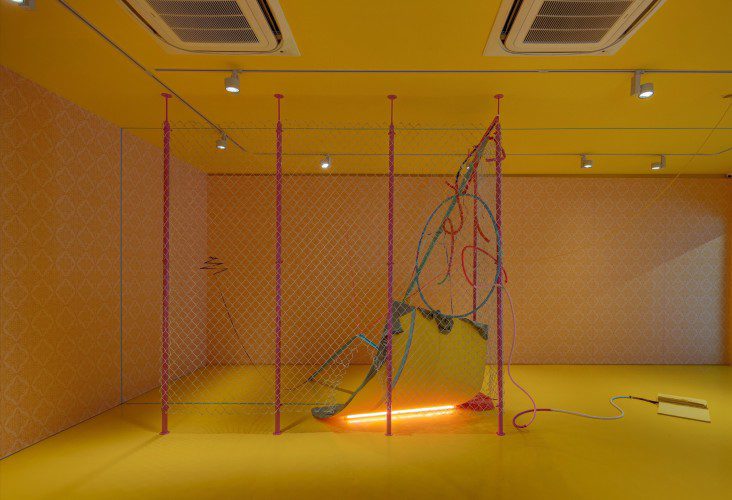
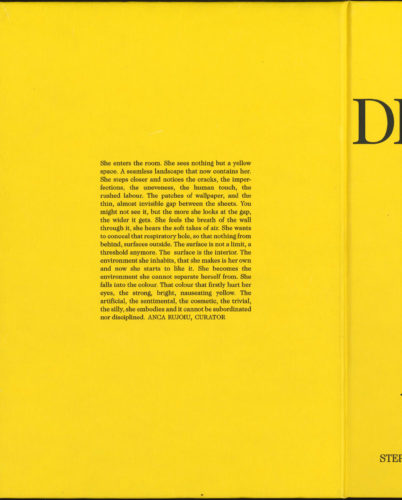
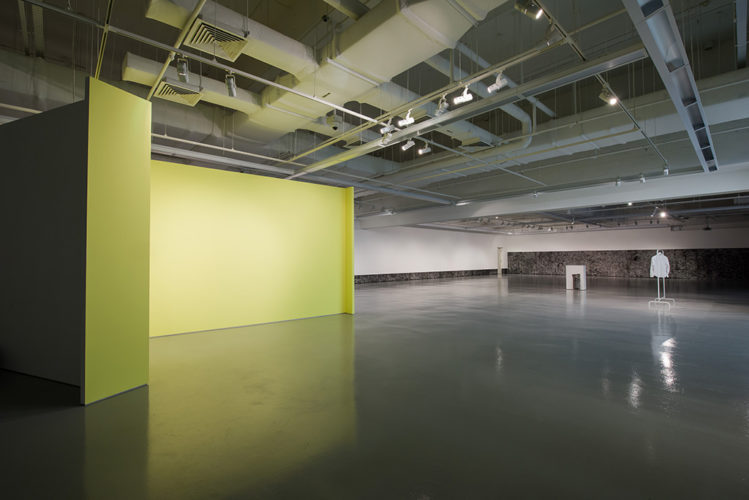
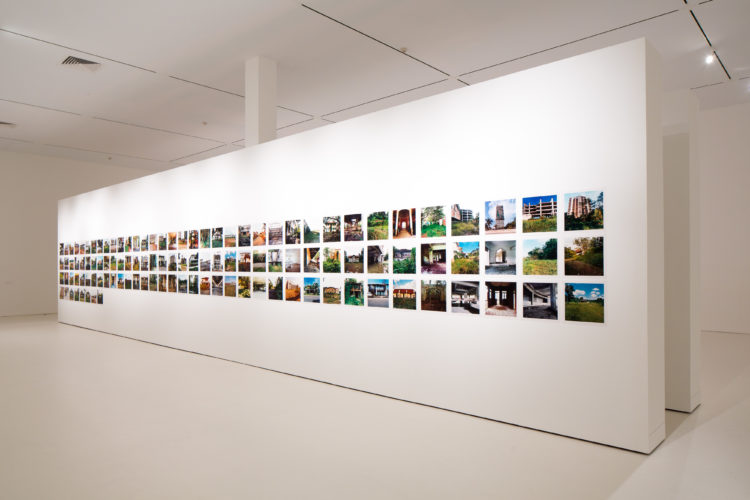
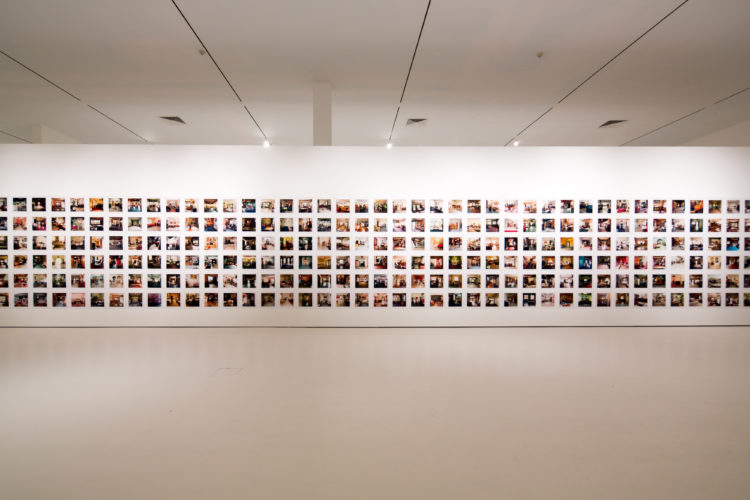
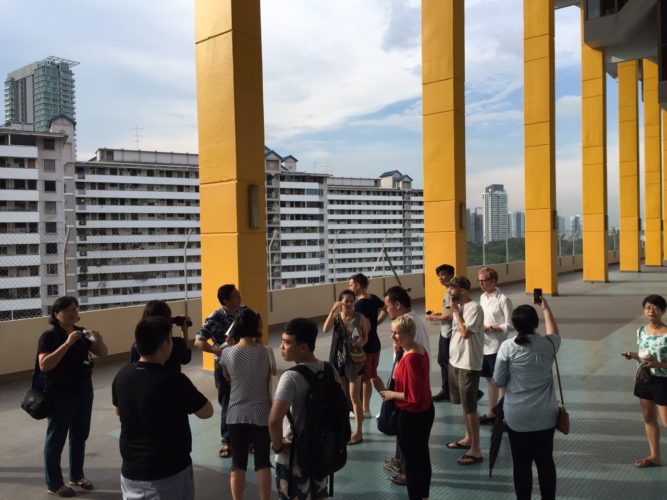
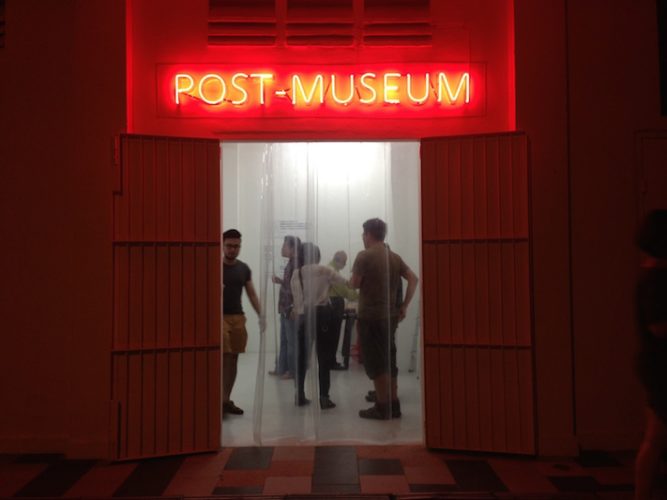
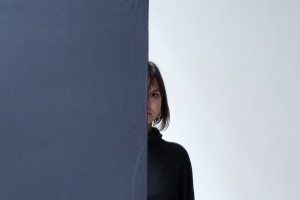
Comments are closed here.